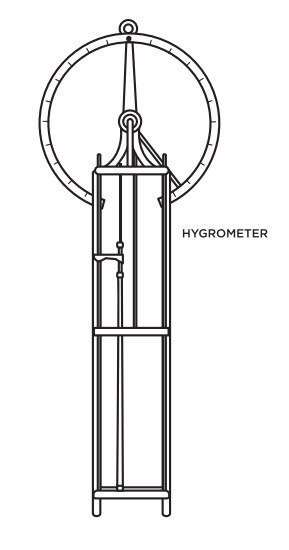In this activity, the students use a piece of their own hair to create a tool to measure humidity.
Ever have a bad hair day? Don’t blame it on your comb; your bad hair day is probably a result of humidity.
Although air is invisible, it has a lot of “stuff” in it, including water vapour. The amount of water vapour in the air at a given temperature is measured as humidity.
Humidity is measured as a percentage called relative humidity (RH). The amount of water vapour that air can hold is depends on the temperature of the air, so when the relative humidity is 100%, the air is saturated (holding as much water vapour as it possibly can at that temperature). Hot air can hold more water vapour than cold air, because cold air is dense, with the molecules packed more tightly together, leaving less space for water vapour in between them.
Humidity causes curly hair to go frizzy or straight hair to go limp because it changes hair length by 3 percent, from dry (0% RH) to very humid (100% RH) conditions. Whether your hair is dark or light, straight or curly, this ratio is stays the same. That’s why we can make relatively accurate measurements of air humidity using human hair.
The tool we use to measure humidity in this activity is called the hair hygrometer. In fact, the 1783 invention proved to be so reliable that it was not replaced by an electrical instrument until the 1960s.
